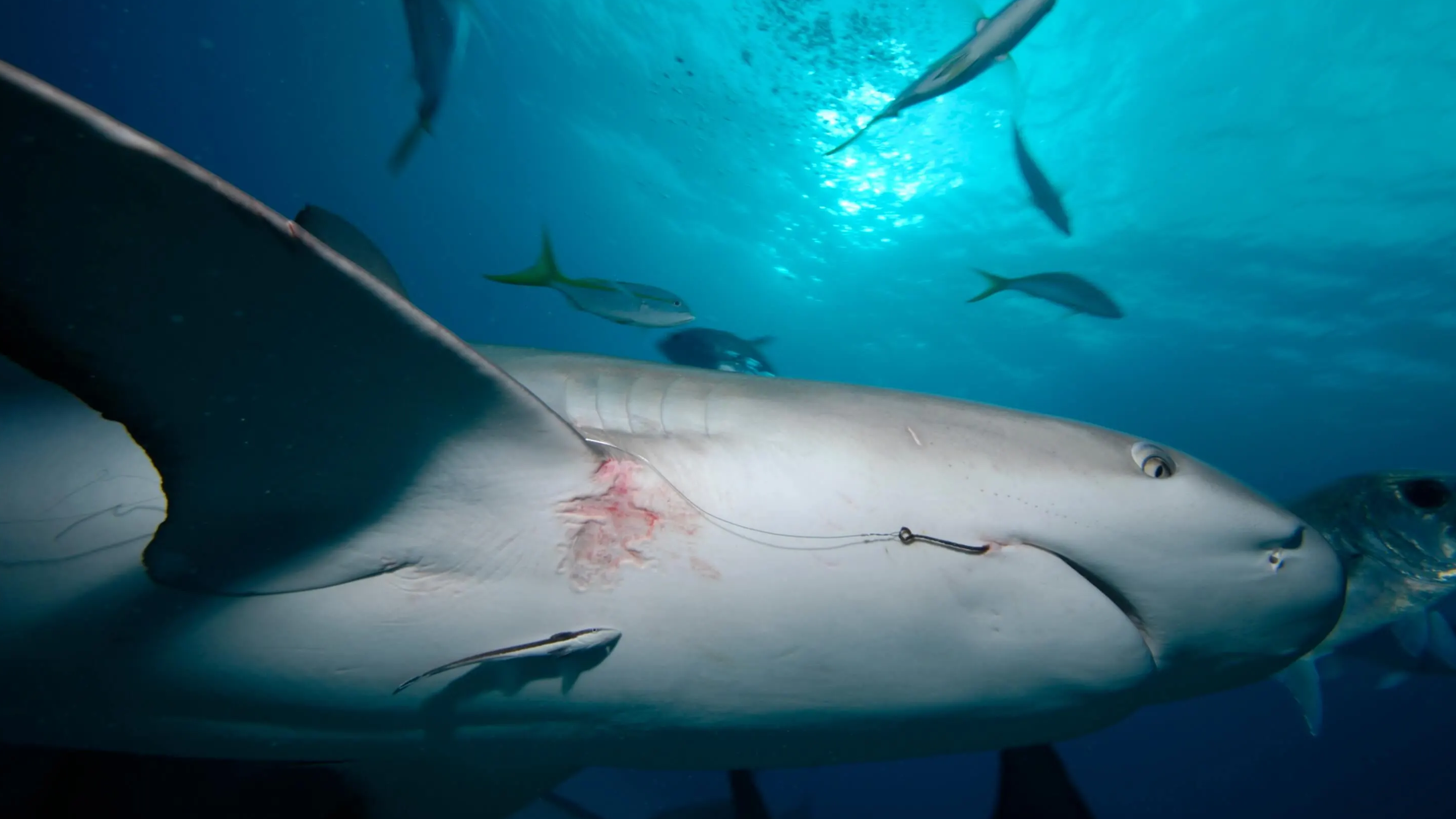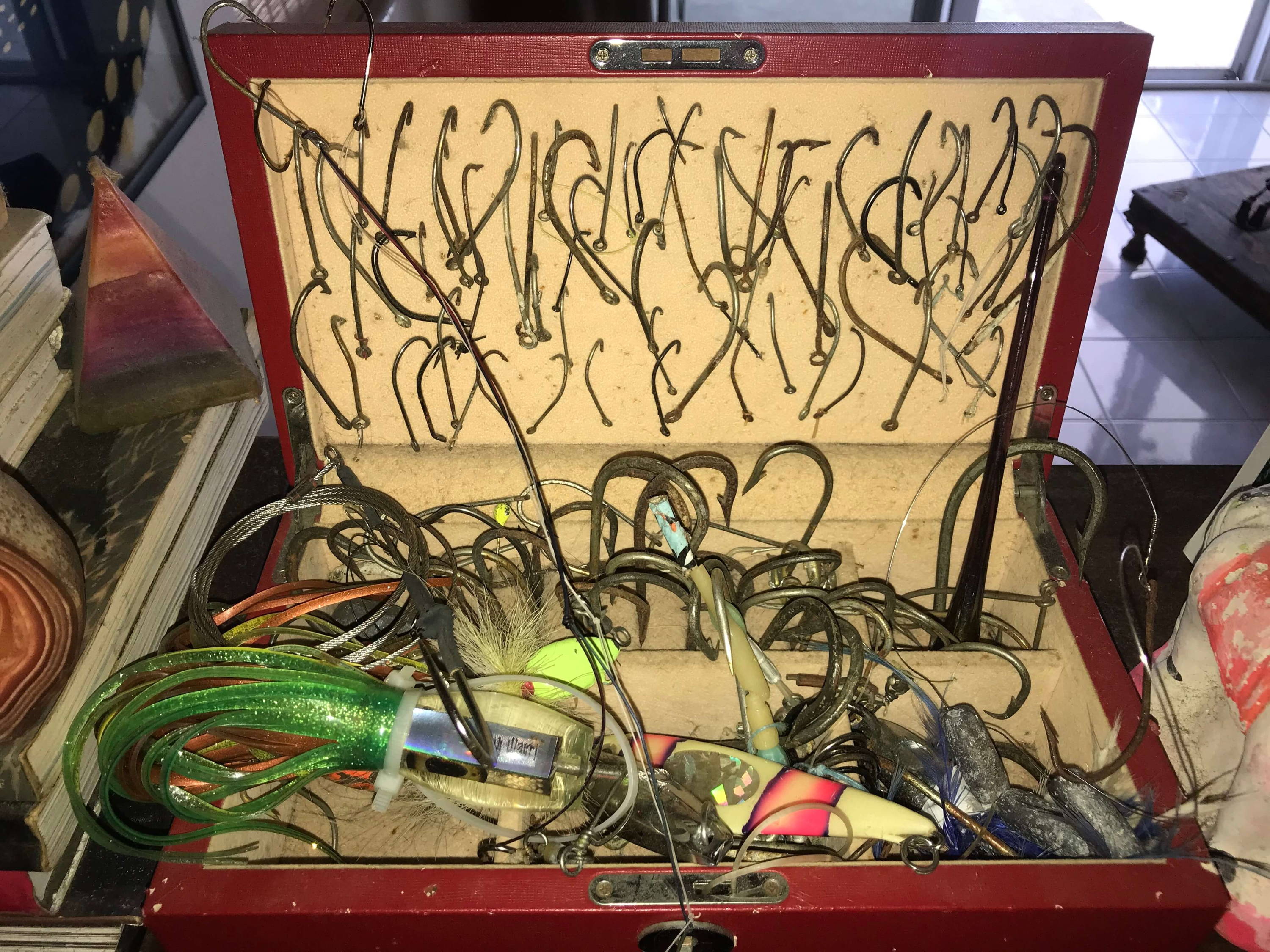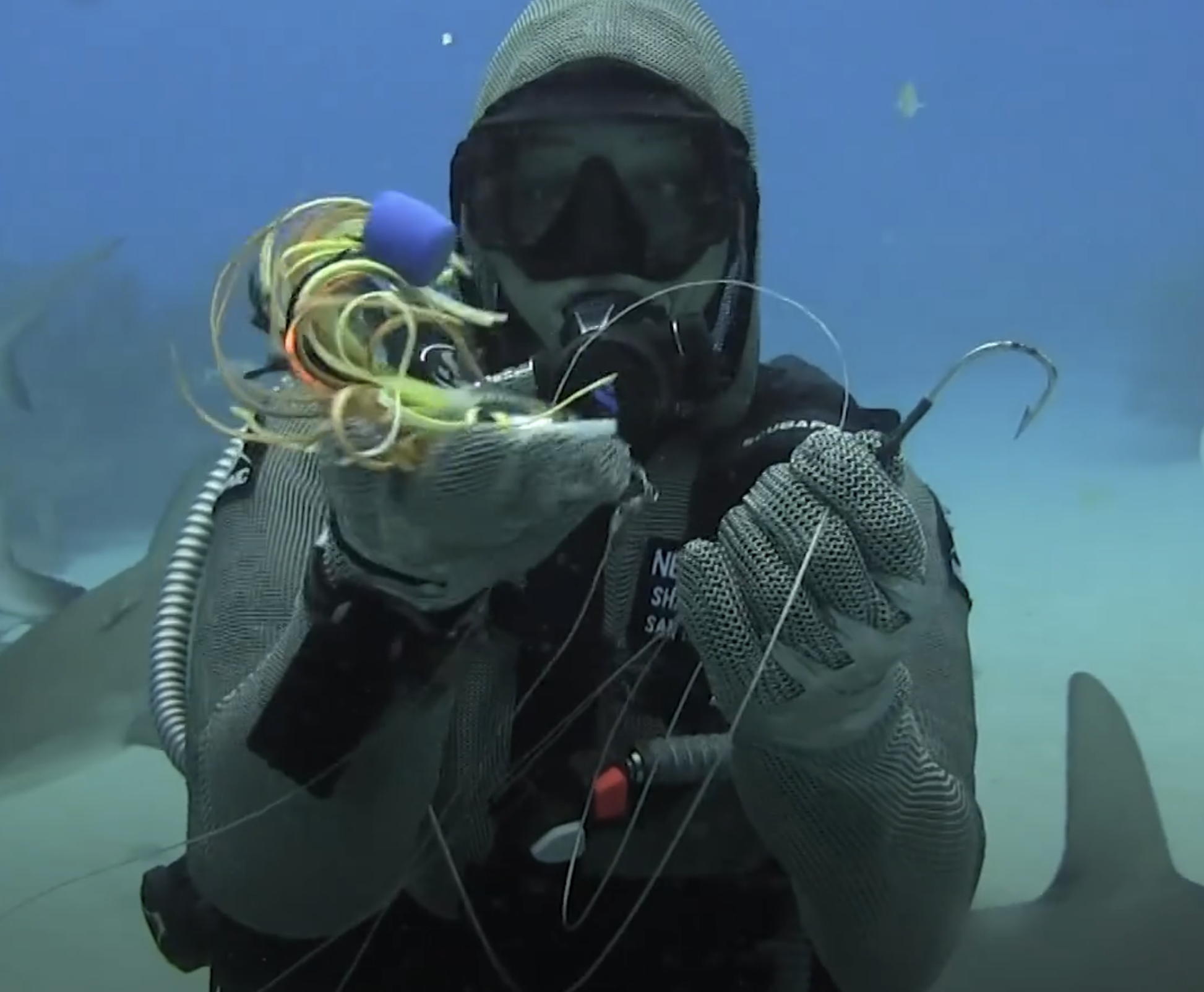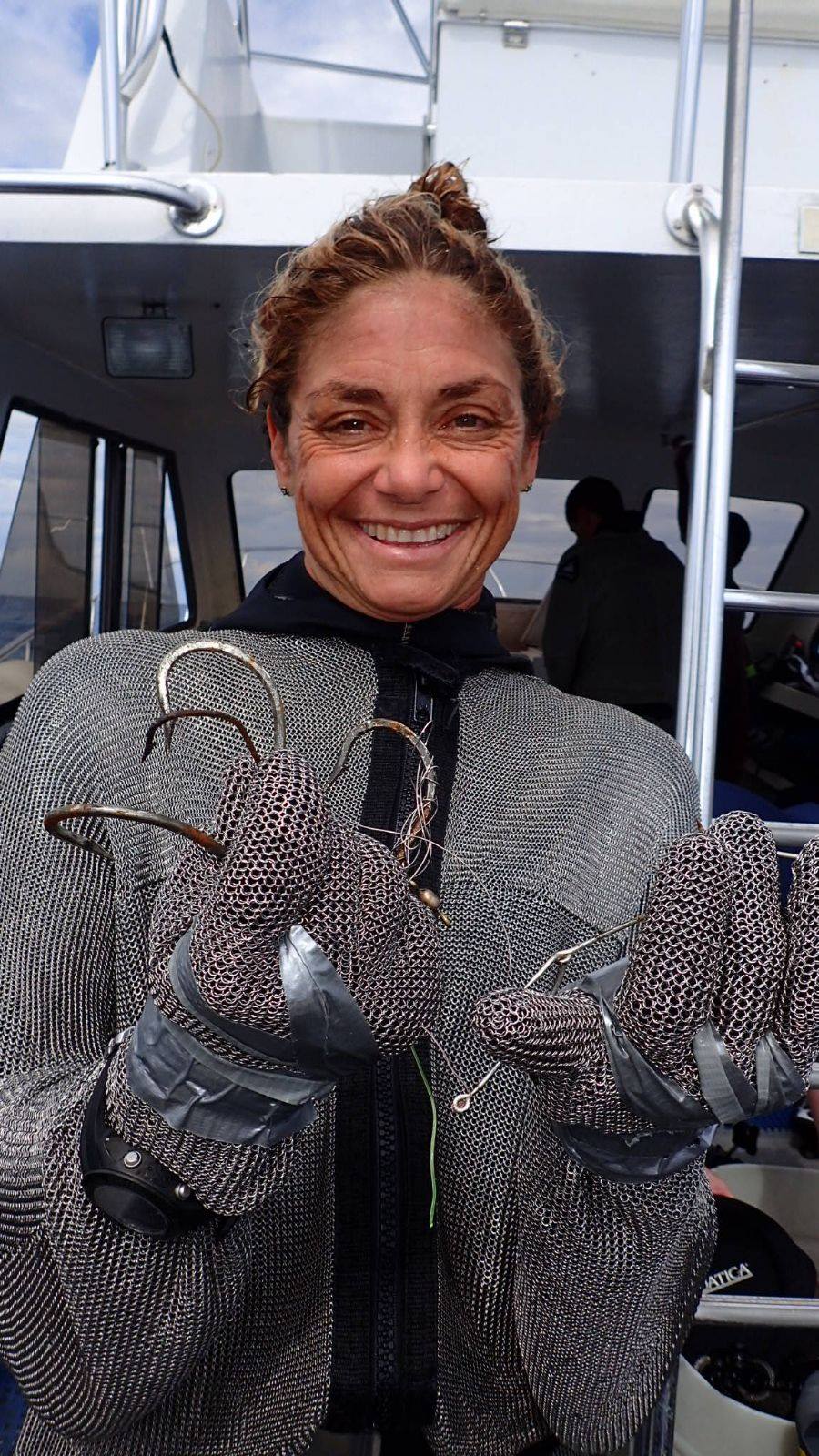- Good Stuff -
- 6mins -
- 1,852 views
Meet the Shark Whisperer who sticks her hand in their mouths to remove fishing hooks
Cristina Zenato is one of the first in the world to induce a state of relaxation in sharks through gentle touch, and over the years she has removed some 300 fishing hooks from their mouths.
Making a difference, one hook at a time
Cristina Zenato has worked with sharks in the wild for the last twenty-five years in the same location on the south shore of Grand Bahama island. They are a group of Caribbean Reef sharks of about twenty individuals and five to six nurse sharks. The group is stationary on the reef stretch and composed primarily of females with a few males coming in and out on occasion. The level of intimacy between diver and these prehistoric fish is remarkable. Do NOT try what you are about to see at home.

Sharks are living dinosaurs who have survived five different massive extinctions
Cristina Zenato recognises each of her sharks by sight, and knows how many years she has been working with them. Some of the older females have been there for nearly thirteen years, some come and go as they please, and some only show up once to never come back. It’s a vast world out there, and each one of them decides what to do.
“Some people say I have developed a special relationship with them. I feel they know me and recognize me; we spend several hours per day together.”
Their size varies from the smallest at four feet to the biggest at nearly nine feet. They measure them using laser photogrammetry and record their size and growth rate through time.
Source: Waterlust.com

Sharks are living dinosaurs who have survived five different massive extinctions
Zenato has named them according to identifying details on their bodies, fins, or eyes. One of the hardest parts of recognising individual sharks is detecting a unique feature of the animal that won’t disappear and heal with time, leaving the sharks without an ID. Shark skin heals incredibly well and fast.
“The names I give are not the most flattering ones. Jokingly my friends tell me that I cannot help them pick a name for their children. Hook, Crook, Stumpy, Scrunchy, Foggy Eye, and Black Spot do not carry dreamy names; however, they are identifiable by even the newest of divers. I hope that if people can identify the sharks as individuals, as creatures, each one different from the other, that it will allow them to feel closer to each animal and ready to learn more about sharks in general. Through my work, I want to create a connection and understanding. We have been able to elevate a polar bear’s status to care for animals; I want to reach the same for sharks.”
“I call these sharks my babies; they are part of my family. I love sharks, but I love these even more. I look forward to seeing them, and I worry when I don’t see them. I hope that the world will be able to see them as the amazing animals they are. They are living dinosaurs who have survived five different massive extinctions. My sharks are the ambassadors for many sharks not fortunate enough to live in protected waters, such as the one of The Bahamas, a shark sanctuary since 2011. They are the carriers of my work, and my desire to see most sharks protected.”
What would terrify the life out of most people is a thrill for Cristina. “I love seeing them coming towards me as I submerge, I love watching their shadows cast over the bright sand on a beautiful sunny Bahamas day, I love following their life cycles, seeing who is pregnant, who is giving birth, who is growing. These are my sharks, and I love them. For that reason, I remove the hooks they have.”
Source: Waterlust.com

Story of ‘The Star Thrower’ is Cristina’s inspiration to remove hooks from sharks’ mouths
Like Caribbean Reef sharks, sharks won’t give up the opportunity of a free meal, and they become a menace for fishers trying to catch traditional fish. Many of the hooks the sharks ended up with were not meant for them, but quite a lot left Cristina wondering what the target was.
“When I talk about removing hooks, I receive feedback stating that I should let the hooks rust. Anyone who tried to argue the "natural process" of a man introduced object degrading in an animal’s body or flesh, needs both a lesson in biology and empathy.”
“I remove hooks from my sharks the same way I want to remove a thorn from my pup’s paw. It is the same desire to alleviate the pain of someone I love. We can all agree that if someone contested the same attitude for a hook inside the lip of a dog or cat, we would scream in horror at the animal cruelty unfolding before our eyes. I desire to expand that gut-wrenching feeling to the harm we are doing to sharks with our presence in the ocean.”
Zenato continues “The hooks become the symbol of my work. I keep them in a red box I received as a gift when I was invited to visit China to educate about shark finning. I collect them one at the time, and collectively they change people’s perception of sharks as creatures who can feel, fear, and hurt.”
To keep motivated, Cristina follows a simple story, one of the ’The Star Thrower’ by Loren Eiseley. If you have never read it, she invites you to do so. In a simple sentence, it teaches us that each action we complete will affect something or someone around us, and if each one of us thought and acted that way, it would slowly change the world or at least make a world of difference for the one affected by our actions.
“That story is my inspiration to remove hooks from sharks’ mouths when I see them.”
Conservation comes in many different ways, from direct action, through science, and through art, photography, and writing. Think globally and act locally, as Cristina does with the work with her sharks. We can start working in our community to change laws affecting sharks as direct catch or bycatch.
We can create educational and outreach programs, reaching the younger generations, we can talk to restaurants and food stores about changing the fish they serve based on safe seafood guidelines (seafoodwatch.org), change the way we consume, use less plastic and find alternative products to reduce our carbon footprint. With every small action, our vision becomes stronger and we become actors of our future.
Follow Cristina the Underwater Explorer and her work on her Website, Facebook and Instagram
Source: Waterlust.com



